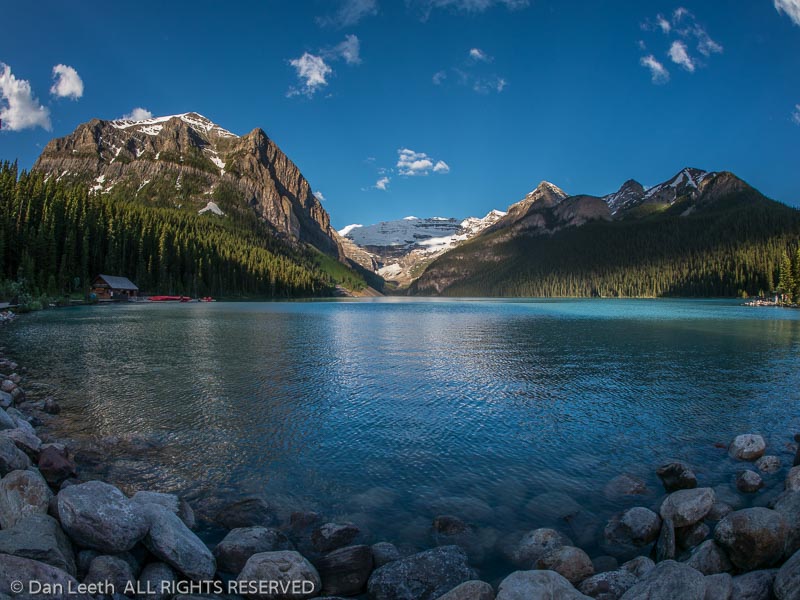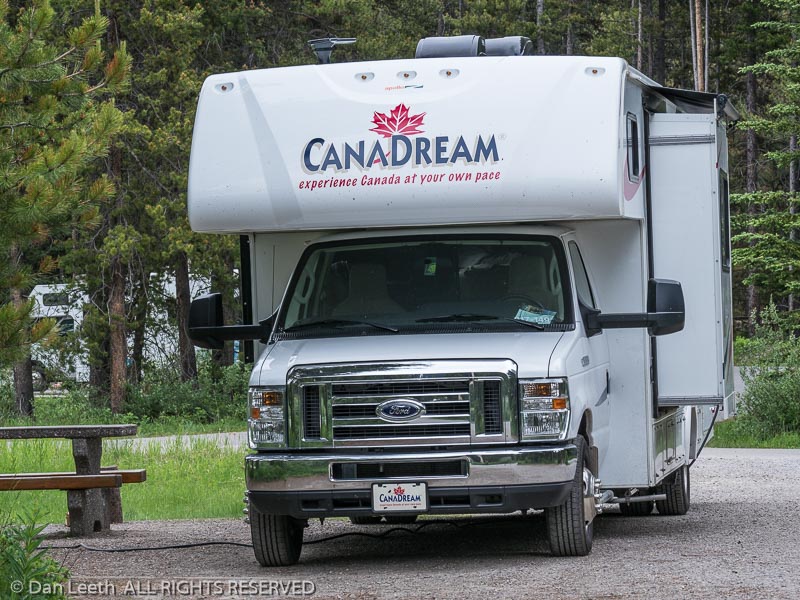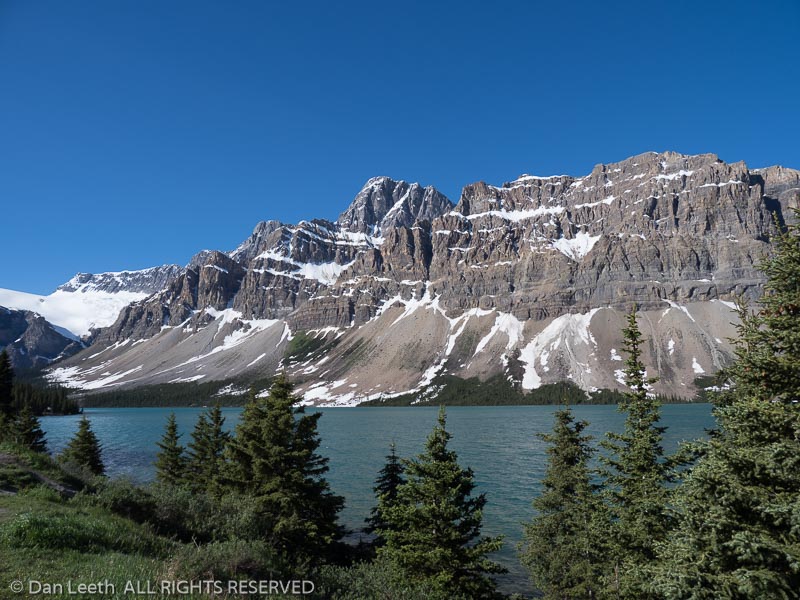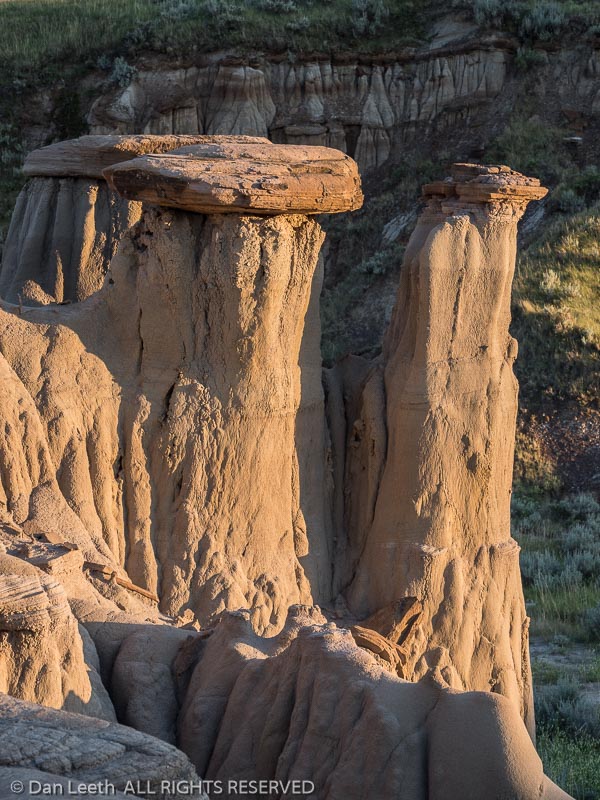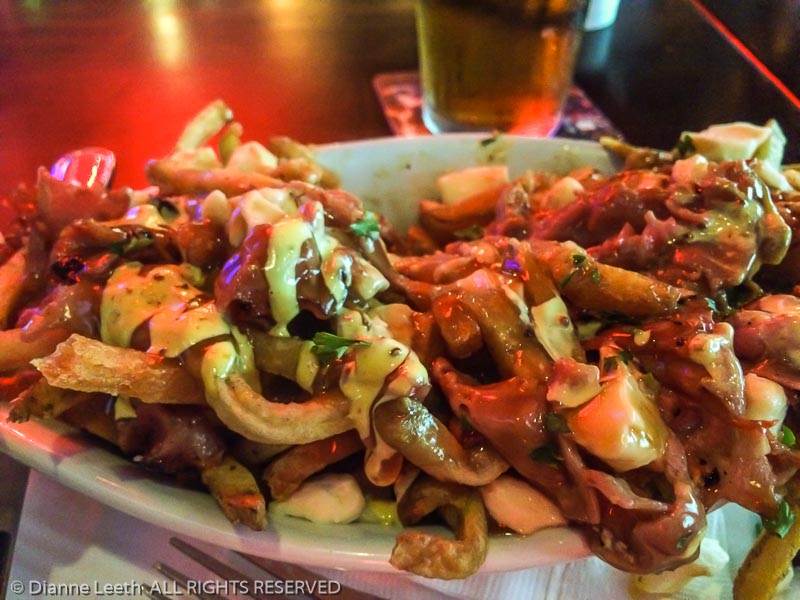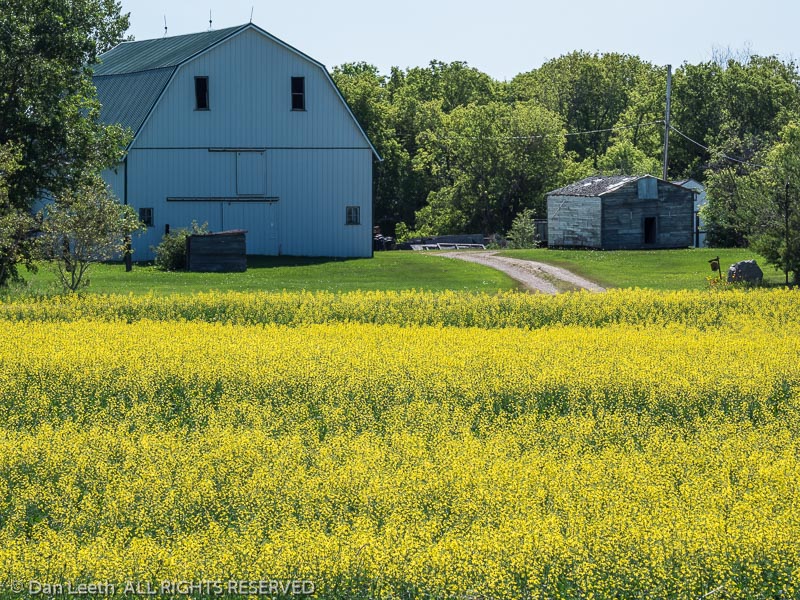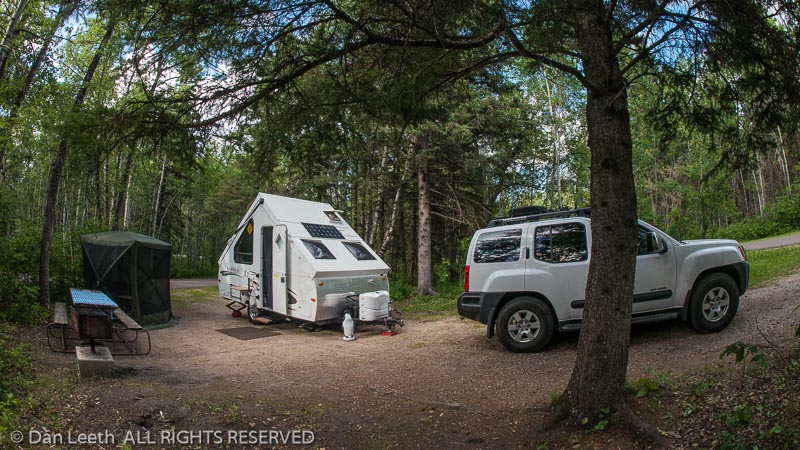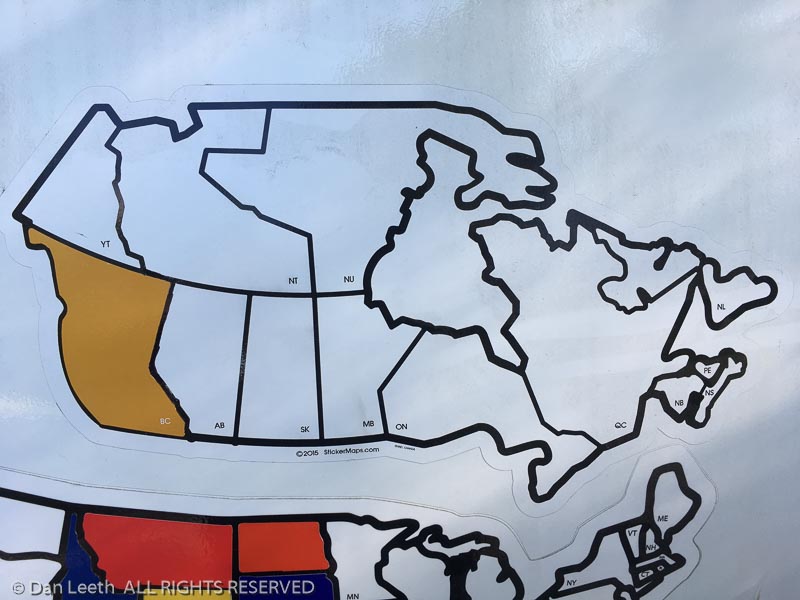
After three days of driving north from Colorado, we finally made it to British Columbia. We entered the Great White North at Roosville, the second busiest Canadian entry point from the state of Montana. There was nobody ahead of us in line and nobody behind. Apparently few folks go from Montana to Canada on a Saturday morning, and the border guard seemed grateful to have something to do.
We assured him we carried no guns, tasers, mace or pepper spray, and he didn’t ask about any beer, wine, meats or vegetables we might be smuggling in. The whole border crossing took less time that it takes to clear a California agricultural bug stop.
We’re diving right into the Canadian way of life. I set the Garmin to kilometres (yes, we’re even using Canadian spellings), which was great for monitoring our speed, but distances suddenly seemed incredibly longer. I reset our indoor/outdoor thermometer to register Celsius, and we can no longer look at it and tell if we’re comfortable or not.
“It says it’s 25 outside. Is that good or bad?” Dianne asked.
We filled up with fuel at the local Who-Knows-What gas station, sloshing in enough litres of fuel that if it were the same number in gallons, it would overflow the tank in our neighbor’s motor mansion. And the final price in Canadian dollars would have made a good down payment on that motorhome. Fortunately, with the favorable exchange rate, everything comes at about 30% off.
We’re now tucked away in our campsite in Kootenay National Park outside Radium Hot Springs. There’s a fresh, 24-pack of Kokanee beer tucked away in the fridge and we’ve got a 120-volt electrical hookup, so we can run the air conditioner. We just need to figure out if 25 degrees is hot or not.

